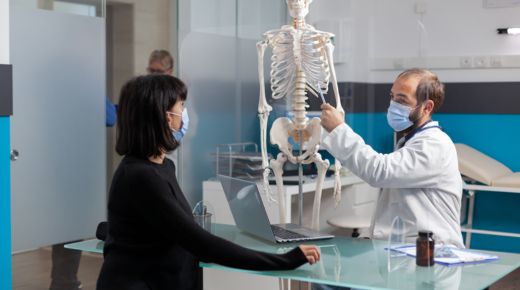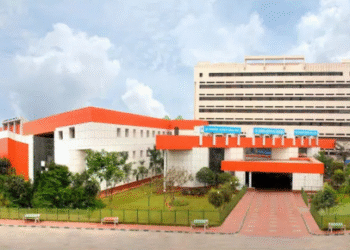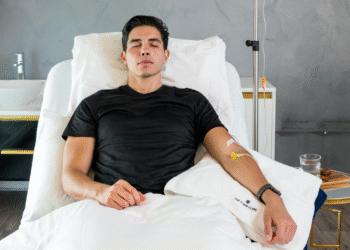
Over the past few years, advancements in medical technology have significantly impacted various fields—and orthopedic care is no exception. As healthcare providers strive to deliver better outcomes for patients, innovative treatment options have emerged, transforming the landscape of orthopedic surgery and rehabilitation. These innovations not only promise improved recovery times and enhanced patient experiences but also signal a future filled with even greater possibilities for optimizing musculoskeletal health.
In this blog post, we’ll discuss the latest breakthroughs in orthopedic care, from cutting-edge surgical techniques and regenerative therapies to the integration of virtual reality and personalized rehabilitation programs. Read on!
Minimally Invasive Surgery
One of the most notable trends in orthopedic care is the shift toward minimally invasive surgical techniques. These procedures require smaller incisions, which means less trauma to surrounding tissues, reduced risk of infection, and quicker recovery times for patients.
Surgeons use advanced cameras and precision instruments to perform complex surgeries, like joint replacements or spinal fusions, with greater accuracy and minimal disruption to healthy tissue. This approach preserves the patient’s natural anatomy and facilitates faster rehabilitation, getting patients back on their feet in record time.
Robotic-Assisted Surgery
The introduction of robotic-assisted surgeries marks another breakthrough in orthopedic care. Robots can perform complex tasks with a level of precision that surpasses human capability. In orthopedic surgeries, robots assist surgeons by providing detailed 3D images of the surgical site and guiding instruments with exceptional steadiness.
This level of precision is particularly beneficial in procedures such as hip and knee replacements, where proper alignment is crucial for long-term success. Patients benefit from shorter hospital stays, less pain, and faster recovery periods, making robotic-assisted surgeries a game-changer in the industry.
Regenerative Medicine
Regenerative medicine is transforming orthopedic care by offering solutions that promote the body’s natural healing processes. Treatments such as platelet-rich plasma (PRP) therapy and stem cell therapy have shown promising results in repairing damaged tissues and accelerating recovery.
PRP therapy involves injecting concentrated platelets from the patient’s own blood into the affected area to stimulate tissue regeneration. Meanwhile, stem cell therapy leverages the body’s innate ability to heal by using undifferentiated cells to rejuvenate damaged cartilage, tendons, and bones. These therapies are particularly appealing as they can be less invasive and support natural recovery, minimizing the need for more invasive surgical options.
Advanced Imaging Techniques
The role of imaging technology in orthopedic care cannot be overstated. Modern imaging techniques, like magnetic resonance imaging (MRI) and computed tomography (CT) scans, provide orthopedic specialists with highly detailed views of musculoskeletal injuries. However, recent advancements have introduced even more precise imaging options such as 3D imaging and arthrography.
These technologies allow for accurate diagnosis and effective treatment planning by delivering comprehensive insights into complex injuries. As a result, patients receive more personalized care that addresses the specific nuances of their condition, ultimately leading to better outcomes.
Bioengineered Implants
Bioengineering has opened new horizons for implant technology in orthopedic care. Researchers are developing implants made from bioresorbable materials that are gradually absorbed by the body, reducing long-term complications associated with traditional metal implants.
Additionally, custom 3D-printed implants are designed to match the unique anatomy of each patient, ensuring a perfect fit and improving the integration with existing bone structures. These innovations in implant technology enhance not only the success rates of orthopedic surgeries but also the quality of life for patients.
Personalized Rehabilitation Programs
The future of orthopedic care lies in personalized rehabilitation programs that are tailored to meet the specific recovery needs of each patient. Advances in wearable technology and data analytics allow healthcare providers to closely monitor patients’ progress and adjust treatment plans accordingly.
These custom programs guarantee that patients are engaging in activities that promote healing and prevent re-injury. By focusing on the individual, orthopedic care can deliver more successful outcomes, helping patients regain mobility and return to their daily lives faster.
Driven by innovative treatment options that improve patient outcomes and enhance the quality of care, the field of orthopedic care is undergoing remarkable transformations. As technology continues to advance, the potential for even more groundbreaking solutions in orthopedic care is limitless. Patients can look forward to a future where recovery is faster, less painful, and more effective than ever before.
















